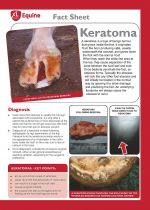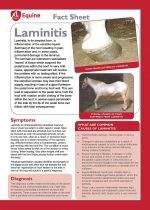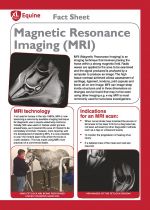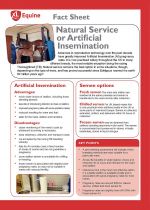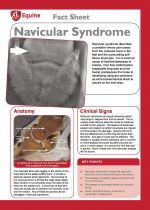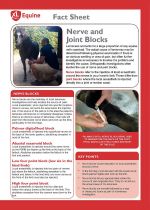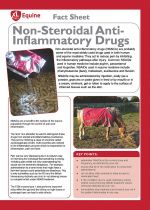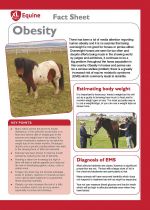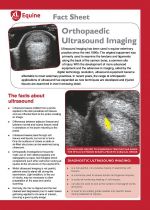Factsheets - Equine
Below are Word and PDF files of our Factsheets. You will need Adobe Reader to view the PDF files - if you need to download Adobe Reader please click here.
Please note: some of these factsheets are several pages long and are large files, so please be patient when downloading!
Keratoma
A Keratoma is a type of bengin tumor that grows inside the foot. It orginates from the horn producing cells, usually underneath the coronet, and grows down the foot with the normal hoof.
Laminitis
Laminitis, in its simplest form, is inflammation of the sensitive layers (laminae) of the hoof resulting in pain, inflammation and, in some cases, permanent damage to the laminae.
Magnetic Resonance Imaging (MRI)
MRI (Magnetic Resonance Imaging) is an imaging technique that involves placing the horse within a strong magnetic field. Radio waves are applied to the area to be examined and the signal produced is analysed by a computer to produce an image. The high tissue contrast achieved allows assessment of cartilage, ligament, tendons, joint capsule and bone; all on one image. MRI can image deep inside structures and in three dimensions so changes can be found that may not be seen using other imaging e.g. x-ray. MRI is most commonly used for lameness investigations.
Nail Bind
Nail bind is a term used to descibe the condition where a nail has been driven too close to the sensitive laminae in the horse's foot.
Natural Service or Artificial Insemination
Advances in reproductive technology over the past decade have greatly improved Artificial Insemination (AI) pregnancy rates. It is now practised widely throughout the UK in many different breeds, the most notable exception being the racing Thoroughbred (TB). Natural service remains the best option in some situations, though, depending on the type of mare, and has proved successful since Eohippus roamed the earth 50 million years ago!
Navicular Syndrome
Navicular syndrome describes a condition where pain arises from the navicular bone in the foot and the surrounding soft tissue structures. It is a common cause of forelimb lameness in horses. Poor foot conformation (especially long toes and low heels) predisposes the horse to developing navicular syndrome as extra biomechanical strain is placed on the heel area.
Nerve and Joint Blocks
Lameness accounts for a large proportion of any equine vet’s caseload. The actual cause of lameness may be determined following physical examination if there is an obvious swelling or area of pain, but often further investigation is necessary to localise the problem and identify the cause. Orthopaedic investigations often involve the use of nerve and joint blocks.
Nerve blocks refer to the injection of local anaesthetic around the nerves in your horse’s limb. These differ from joint blocks where the local anaesthetic is injected directly into a joint or tendon canal.
Non-Steroidal Anti-Inflammatory Drugs
Non-steroidal anti-inflammatory drugs (NSAIDs) are probably some of the most widely used drugs used in both human and equine medicine. They act to reduce pain by inhibiting the inflammatory pathways after injury. Common NSAIDs used in human medicine include aspirin, paracetamol and ibuprofen. NSAIDs used in equine medicine include phenylbutazone (bute), meloxicam, suxibuzone and flunixin.
Obesity
There has been a lot of media attention regarding human obesity and it is no surprise that being overweight is not good for horses or ponies either. Overweight horses are seen far too often and despite efforts being made in the showing world by judges and exhibitors, it continues to be a big problem throughout the horse population in this country. Obesity in horses and ponies can be a serious welfare problem; there is a greatly increased risk of equine metabolic syndrome (EMS) which commonly leads to laminitis.
Orthopaedic Ultrasound Imaging
Ultrasound imaging has been used in equine veterinary practice since the mid 1980s.
